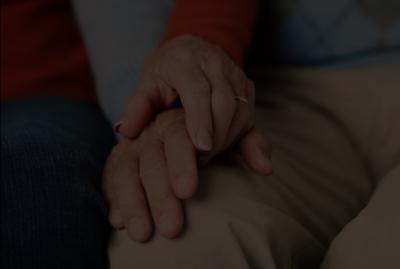Infants Through Adolescents - How Children Cope With Grief
The cognitive and emotional levels of development from infant through adolescent cover a wide span of grief. The age of a child/adolescent and a child's/adolescent's perception of death must be understood before the
caregiver or facilitator starts interacting with the child.
A grieving child at each different level of development will need assistance in building coping skills and finding a sense of closure to his/her loss. Children at all developmental stages experience grief on different chronological and emotional levels.
Infants and Toddlers
Children younger than four can sense that something is wrong as they experience the grief of their primary caretaker. The absence of the mother may cause a clear biological reaction. Anger, crying, searching, lack of appetite, and finally quiet resignation are the ways in which a child will grieve for the loss of the mother/primary caretaker.
The child should not be passed from caretaker to caretaker.
What one does is far more important to the child this young than what one says. Generally, a grieving infant or toddler needs large doses of tender, loving care--holding, cuddling, and stroking.
Four- to Six-Year Olds
Bereaved children between four and six have a limited and literal understanding of death. For a child in this age range, death may be explained in physical terms. Because thinking is very literal and bodily oriented, death may be best explained as follows:
His/her heart stopped beating and no one can make it start again. Therefore, we won't be seeing him/her move or talk anymore. We will bury the body in the ground, because (identify the person, using their name) is not able to do or say anything anymore.
Children will often note the discrepancy between burial of the body and the description of "going away" or "going to Heaven." While the young child probably can't grasp the concept, one might address the distinction as the part that we love--the part that smiled and laughed and loves us-is the part that has gone to heaven. The old, broken body is now what is in the ground.
Caretakers can facilitate therapeutic role-play by sitting with the child as he or she plays with dolls, stuffed animals, puppets, toy cars, and doll houses. Look for aggression in play and explore where the anger is focused.
Seven- to Eleven-Year Olds
Children ages seven to eleven are still primarily oriented to the family, and although they've begun to relate to and gain self-identity through their peers, play is still a mode of self-expression. Children this age also express themselves quite well orally, especially the primary feelings of mad, glad, and sad.
They have begun to grasp more abstract concepts such as truth, time, space, and death, although magical thinking still plays a role. Most commonly, seven-or eight-year-olds become fearful of death because they realize for the first time it's real.
No matter who dies, they may feel devastated at the thought of losing a parent. Obviously, the death of a parent is extremely traumatic at this age. Some of their questions may indicate fears of their own death. Death is seen as an attacker who takes life.
Free expression of grief must be encouraged, and children must be told over and over that they didn't cause the death and that the dead person did not choose to die. A child of this age may also fear that death is a punishment for improper behavior. They may fear that their naughty behavior has brought about the death of a loved one, and they are being punished for it. They may also believe that they or another loved one will be the next to die.
A more adult concept of life and death develops roughly between the ages of nine and eleven. At this developmental level, the children have learned that only people, plants, and animals live and die. Children of this age are not only sensitive to their own feelings, but can now enter into the feelings of others.
As a result, they are more understanding of what the loss may mean to others, and they are able to show empathy. Children in the upper end of this range not only need support and comfort, but also can be a source of support and comfort for others. Opportunities to be helpful to others
during the crisis can actually help children deal with their own feelings.
Adolescents 12-17
To the emotionally healthy adolescent, death is foreign; it's something they simply do not want to think about. Sometimes their self-destructive behavior, such as alcohol or drug abuse or playing chicken in an automobile are means of saying "I'm not afraid of death; it's a game--I'm making a plaything of it."
However, the real meaning beneath the behavior is that they're trying to control their fear and insecurity by making it a game. Moving fast and keeping the music loud can be an escape from having to face their fears.
When met with the loss of an important relationship, the adolescent's self-centered values may cause them great fear, guilt, anxiety, and anger. Adolescents have the capacity for empathy with other grieving family members or friends, so their pain is doubled.
Because an adolescent forms more intimate relationships with peers than with parents, it's advisable that networks or groups be make available for adolescents who have experienced the death of a loved one.
The adolescent may respond well to another adult who is willing to listen and assume a surrogate parent role with them. While reluctant to participate in their own family grief or support groups, they may respond well to
a pastor, school counselor, or another adolescent who "understands."
Caretakers of a grieving adolescent should not be discouraged if their teen reaches to someone other than family. That's normal at this stage of development.
Authored by Yvonne Butler Clark, author, It's Okay to Cry




